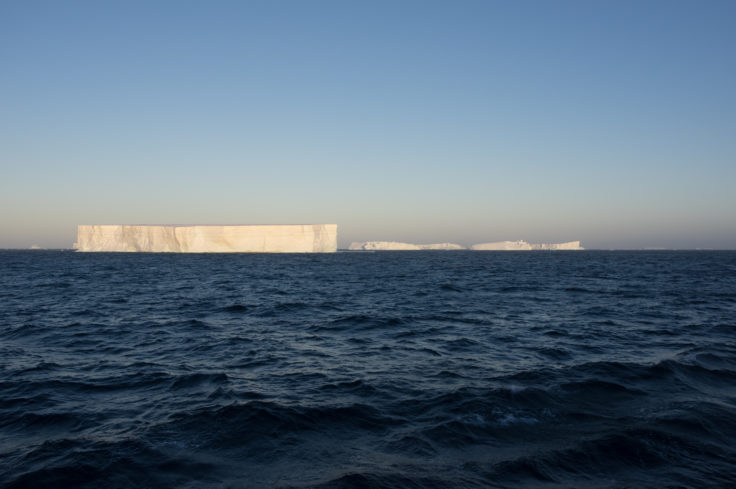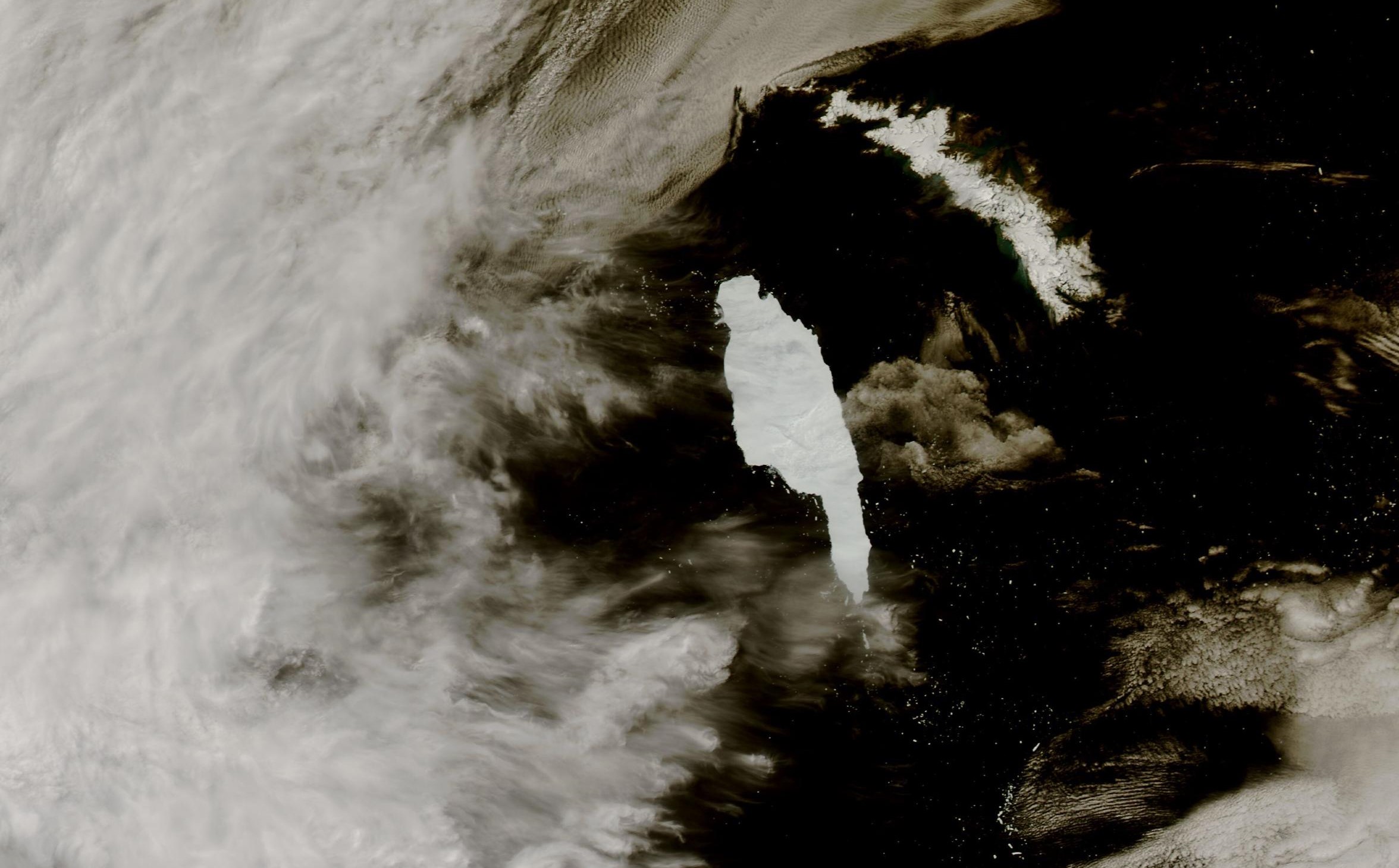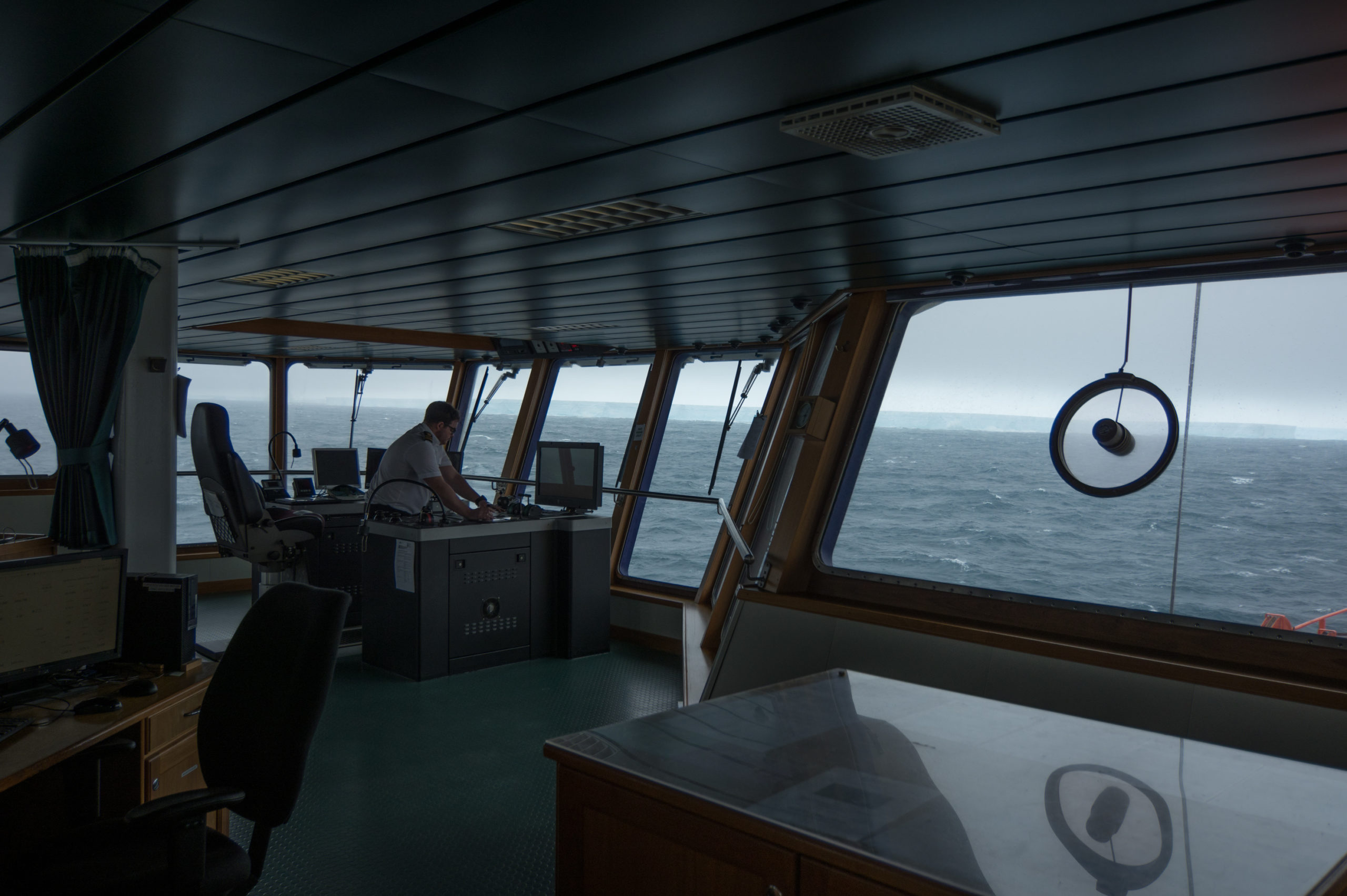Scientists have for the first time taken in-situ ocean measurements during the collapse of a giant iceberg in the sub-Antarctic. These new observations reveal how ocean ecosystems may be affected if more icebergs calve due to warmer ocean temperatures around Antarctica.
The mega iceberg A-68A, which started out four times the size of Greater London, calved off the Larsen Ice Shelf on the Antarctic Peninsula in 2017. Scientists tracked the iceberg on its 4000 km journey across the South Ocean until it reached the sub-Antarctic island of South Georgia, where it broke up and melted over a three-month period from late 2020 to February 2021. The results are published this month (August) in the journal Progress in Oceanography.

In February 2021, a team from British Antarctic Survey (BAS) and National Oceanography Centre (NOC) diverted a research ship already in the area to record how the iceberg's melting was contributing to the ocean and ecosystem of South Georgia.
The occurrence of icebergs at South Georgia is common, and shipping reports have historically recorded their prevalence in the region between the Weddell Sea and northern Scotia Sea and leading onwards to South Georgia. The route is known as 'iceberg alley' as icebergs that calve off Antarctica typically drift northwards, carried by ocean currents to the warmer open ocean. However, very few of these icebergs have been studied by scientific expeditions, which are planned years in advance and focus on specific studies rather than opportunistic science.
Over four days, the team on board the ship RRS James Cook were able to collect invaluable physical, chemical and biological measurements to understand what impact A-68A was having at South Georgia.
The team discovered that as A-68A melted, the layering of water within the ocean was restructured, with meltwater at the surface forcing down the underlying layers. This pushed down particulate material and phytoplankton, redistributing nutrients and micronutrients in the water. Phytoplankton that was within the iceberg's frozen mass was also found in the water around the icebergs, having melted out from the iceberg and rapidly grown in numbers.

Iceberg A-68A was the sixth largest iceberg ever recorded by satellite. As it travelled towards South Georgia, there were concerns it would ground on the seafloor and disrupt the precious marine conservation area in the region.
Geraint Tarling, co-lead author of the research and a Science Leader at BAS, says:
"A-68A was a huge iceberg in comparison to most, and unusually it didn't break up on its journey. It gained a lot of media attention because it was almost as large as South Georgia itself, and we were extremely worried about how it would affect local wildlife such as nesting birds and seals trying to wean their pups."
Giant icebergs are a major way that freshwater is taken from ice shelves to warmer seas as they calve, travel through the ocean and eventually melt and collapse. This process is not well understood, and the new study contributes to knowledge of this mechanism.

Sally Thorpe, co-lead author of the study and ecological modeller at BAS, says:
"Climate models predict that icebergs may calve more frequently from Antarctic ice sheets in the future. So, by understanding what's happened to this one, we have a better idea of what effect they are likely to have if and when they occur at greater frequency."
She continues:
"Since A-68A, other giant icebergs have arrived at South Georgia and collapsed to varying degrees. Our study provides a baseline for how icebergs may influence sensitive marine ecosystems such as that of South Georgia, and lets us untangle their impact from other oceanographic influences such as surface currents and ocean mixing."
Collapse of a giant iceberg in a dynamic Southern Ocean marine ecosystem: In situ observations of A-68A at South Georgia by Tarling, G., et al is published in Progress in Oceanography.






